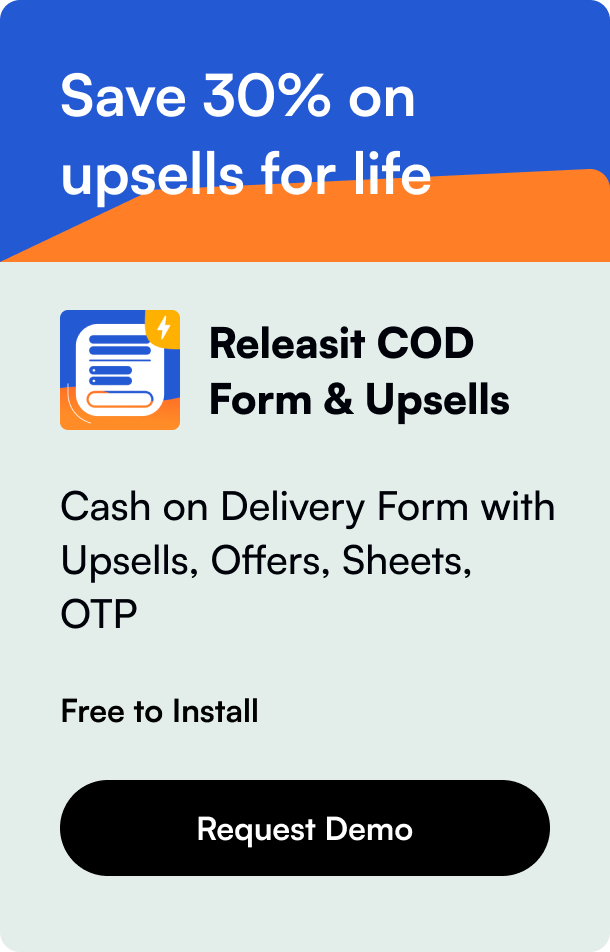Table of Contents
- Introduction
- Understanding the Role of Google Tag Manager
- What You Should Consider Before Installation
- Integrating Google Tag with Shopify: A Step-by-Step Guide
- Best Practices for Long-Term Success
- Conclusion
- Frequently Asked Questions on Google Tag and Shopify
Introduction
Have you ever felt overwhelmed with the vast amounts of data and metrics available from your online store that you're unsure where to focus? Google Tag can become your new best friend. In today's digital commerce landscape, the implementation of tracking codes, such as those powered by Google, can be the lynchpin for understanding customer behavior, optimizing ad spend, and ultimately driving growth for your Shopify-based business.
Missteps in tracking can lead to misunderstandings about your customers’ pathway on your site, which can translate into lost sales opportunities. That is why learning how to add Google tag to Shopify is not just an option – it’s essential.
This guide will take you through why it’s crucial for your Shopify store, how it differs from Google Analytics, what unique considerations you must bear in mind for Shopify, and also how to conduct the process step by step.
Understanding the Role of Google Tag Manager
Google Tag Manager isn't just another statistic to track, it's the cog that ensures all other metrics on your Shopify site function coherently. Firstly, it's important to distinguish the Google Tag Manager from Google Analytics. While Google Analytics gives you the direct data from your site, the Tag Manager is the tool that manages the different types of code snippets – known as tags – allowing for events tracking without the need to manipulate site code directly. This provides a user-friendly way to manage, deploy, and update tags such as tracking and marketing optimization Javascript snippets.
What You Should Consider Before Installation
Before diving into integrating Google Tag Manager into your Shopify store, it's essential to have the foundational knowledge of its mechanics. Specifically:
- Ensure there is clarity on the role and use of Google Tag Manager vis-à-vis Google Analytics.
- Be aware of the Google shift from Universal Analytics to Google Analytics 4, considering how you can future-proof your tracking strategies.
- Understand the limitations in applying it to your Shopify store, mainly the limitations on Shopify’s checkout pages which are dependent on the plan you operate within Shopify.
- Note the deadlines set by Shopify regarding changes to
checkout.liquid, tailored to Shopify Plus merchants, potentially impacting the tagging of checkout, thank you, and order status pages.
Integrating Google Tag with Shopify: A Step-by-Step Guide
To start deploying Google Tag Manager and use it for enhanced analytics on your Shopify store, follow the in-depth steps involved:
Acquiring and Placing Your Google Tag Code: Sign up for Google Tag Manager, and obtain your exclusive Google Tag ID.
Clarifying tag Types: If operating Google Ads and Google Analytics, clarify whether to use 'AW-' or 'G-' based tag IDs.
Shopify Integration Process: Within your Shopify store, the familiarization with where to add tags is crucial - typically, through Preferences for 'AW-' IDs and through Sales Channel for 'G-' ones.
Coding Considerations: Shopify requires specific steps for the proper placement of tag snippets. This often involves adding tag manager code into your Shopify theme’s files to ensure it operates throughout your site.
Use of Supporting Apps: Some Shopify storeowners might prefer a guided addition of Google Tags using specialized apps, like those causing the firing of tags during events (e.g.,
addToCartevents).Validation of Configuration: Always verify that your Google Tags are working correctly once set up, using tools like Google Tag Assistant.
Remember that sans Shopify Plus, you won’t be able to customize your checkout experience, a factor to consider while tagging.
Best Practices for Long-Term Success
Deploying tags correctly is one thing, but maintaining a seamless tracking system is another. Adopt proactive approaches such as:
- Routinely checking for consistency in your data collection methods.
- Regularly auditing your tags for relevance and accuracy.
- Recognizing patterns and making data-backed adjustments.
Conclusion
Incorporating Google Tag into your Shopify store doesn't just end at the installation. It’s a commitment to continuously harvest and interpret the gleaned data to fine-tune your digital storefront for the best customer experience.
Navigating through the digital tools and understanding them is not optional but a core aspect of managing a successful online presence. So start integrating Google Tag with your Shopify store and unlock a more profound understanding of your customers and their journey on your site.
Frequently Asked Questions on Google Tag and Shopify
- Will adding tags slow down my Shopify site? Properly configured tags should not impact your site’s speed significantly. However, the unoptimized implementation of multiple tracking codes can contribute to a slow-down.
- Can I track conversions on my Shopify store using Google Tag Manager? Yes, with the correct setup of tags and triggers in Google Tag Manager, you can track conversions on your Shopify store.
- Is Google Tag Manager free to use? Google Tag Manager is free and available to any user with a Google account.
- How often should I update or edit my tags? Assess and edit tags whenever there are website updates, strategy shifts, or if you adopt new marketing channels requiring tracking.
- Do I need to know to code for setting up Google Tag on Shopify? Basic understanding helps, but it is not necessary—Shopify and Google Tag Manager are built to accommodate users without coding expertise.
By applying these actionable insights and strategies, you will elevate your store’s tracking system, gathering the intelligence you need to align your operation with clear, data-driven objectives.
Seamless content creation—Powered by our content engine.









